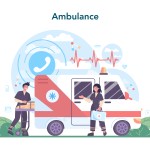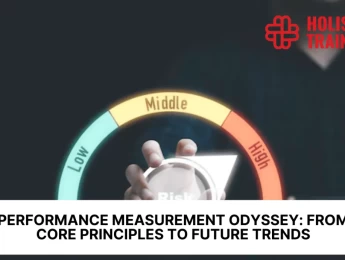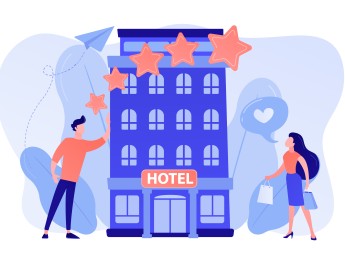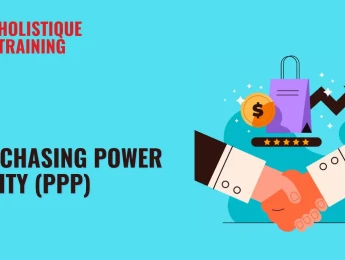- Table of Contents
- Introduction
- Understanding Health and Safety Management
- The Significance of Health and Safety Management
- Human Capital Preservation
- Legal and Ethical Obligations
- Reputation and Trust
- Resource Optimisation
- Community Impact
- Ten Principles of Effective Health and Safety Management
- 1. Leadership Commitment
- 2. Risk Assessment
- 3. Stakeholder Involvement
- 4. Clear Policies and Procedures
- 5. Training and Education
- 6. Emergency Preparedness
- 7. Continuous Monitoring and Improvement
- 8. Communication Channels
- 9. Resource Allocation
- 10. Data-Driven Decision Making
- Challenges in Health and Safety Management
- 1. Complacency and Resistance to Change
- 2. Balancing Productivity and Safety
- 3. Complex Regulatory Landscape
- 4. Resource Constraints
- 5. Cultural and Language Diversity
- 6. Technology Adoption and Integration
- 7. Psychological Barriers
- 8. Global Events and Pandemics
- 9. Measuring and Demonstrating Impact
- 10. Supply Chain Challenges
- Healthcare Management in an AI-Driven World
- 1. AI in Disease Diagnosis
- 2. Predictive Patient Monitoring with AI
- 3. Personalised Treatment Plans
- 4. Resource Optimisation and Efficiency
- 5. Ethical Considerations and Human Oversight
- 6. Continuous Learning and Adaptation
- Conclusion
Introduction
Amidst the intricacies of modern life, one overarching concern remains constant - the well-being of individuals. While progress has brought numerous benefits, it has also led to increasingly complex environments that demand meticulous attention to health and safety. Enter the realm of Health and Safety Management, a pivotal facet that safeguards individuals and nurtures a culture of well-being. In this comprehensive exploration, we delve into the essence of Health and Safety Management, elucidate its significance, and unveil the ten essential principles that underpin effective practices.
Understanding Health and Safety Management
At its core, Health and Safety Management transcends the confines of a mere organisational protocol; it is a testament to society's commitment to safeguarding the well-being of every individual. In a world brimming with innovation and progress, the intricacies of daily life have evolved, necessitating a robust framework that not only prevents harm but actively cultivates an environment conducive to flourishing health and peace of mind. This multifaceted approach involves meticulous planning, strategic implementation, and vigilant oversight of measures that encompass physical, psychological, and emotional aspects of safety.
In essence, Health and Safety Management emerges as a dynamic and holistic endeavour. It operates on the premise that an ounce of prevention is worth a pound of cure, advocating for proactive interventions that transcend the boundaries of reaction. It envisions environments where potential hazards are meticulously assessed, risks are meticulously evaluated, and measures are meticulously designed to mitigate them. This ranges from implementing ergonomic workstations to forestalling the spread of infectious diseases. Moreover, this approach underscores the interconnectedness of well-being – understanding that mental health, emotional resilience, and social cohesion are intertwined facets that require equal attention in the pursuit of a safe environment.
Within the realm of Health and Safety Management, the significance of empowerment and agency takes centre stage. It's not merely about adhering to rules but fostering a mindset where individuals are educated and enabled to make informed decisions. By instilling a sense of responsibility and ownership, this management philosophy empowers individuals to identify potential risks, adopt safe practices, and act as catalysts for positive change within their surroundings. In doing so, it cultivates a culture of vigilance and care, where everyone becomes a guardian of their well-being and that of their peers. Thus, Health and Safety Management transcends the realm of regulations; it's a living embodiment of the age-old adage ‘prevention is better than cure,’ breathing life into spaces that prioritise life's most precious asset – health.
The Significance of Health and Safety Management
In the complex tapestry of modern existence, the significance of Health and Safety Management reverberates far beyond the surface. It intertwines with the very fabric of our lives, impacting individuals, organisations, communities, and society as a whole. Let's delve deeper into why this facet of management holds a pivotal role in shaping the world we inhabit:
Human Capital Preservation
Picture an organisation where employees feel not only valued but also secure in their environment. This emotional safety translates into increased engagement, enhanced productivity, and unwavering commitment. When an employee isn't worried about their well-being, they can focus their energy on contributing meaningfully to their tasks and the larger goals of the organisation. By investing in Health and Safety Management, organisations indirectly invest in theirhuman capital, fostering a workforce that thrives both personally and professionally.
Legal and Ethical Obligations
In an era where ethical considerations wield significant influence, embracing health and safety practices transcends mere compliance. Organisations carry a legal and moral duty to provide a secure environment for their employees, customers, and stakeholders. Abiding by health and safety regulations isn't merely a means to avoid penalties; it's a declaration of the organisation's commitment to upholding the rights and well-being of those it impacts. By doing so, organisations fortify their reputation as responsible and ethical entities.
Reputation and Trust
In the interconnected world we inhabit, reputation isn't just a buzzword; it's a currency of trust. Organisations that prioritise the health and safety of their stakeholders are perceived as dependable and caring. Whether it's the public, customers, or potential employees, individuals are drawn to entities that put their well-being on a pedestal. The trust garnered through these actions extends beyond the organisational boundaries, permeating society at large. In a world inundated with choices, organisations that stand as beacons of safety and care stand out amidst the noise.
Resource Optimisation
The financial implications of accidents and incidents reverberate well beyond immediate medical costs. Operational disruptions, compensation claims, litigation expenses, and reputational damage can accumulate, draining organisational resources. By proactively investing in health and safety measures, organisations preemptively mitigate these risks. The resources saved can be reallocated to avenues that drive innovation, growth, and sustainable development, fostering a cycle of success.
Community Impact
The impact of effective Health and Safety Management radiates beyond organisational confines. By establishing a culture of safety, organisations set a precedent for responsible practices that echoes through the larger community. Whether it's advocating for safe roadways, influencing local policies, or instilling safety awareness in households, the ripple effect of a safety-focused ethos extends far and wide, nurturing a healthier and more secure society.
As we reflect on these facets, it becomes evident that the significance of Health and Safety Management is not a static concept but a dynamic force with transformative potential. It is a cornerstone that supports the aspirations of individuals, the resilience of organisations, and the collective progress of society. By placing health and safety at the forefront of our endeavours, we coalesce efforts toward a brighter future where everyone can thrive without compromise.
Ten Principles of Effective Health and Safety Management
Navigating the labyrinth of modern life requires a robust framework that ensures the well-being of individuals is not left to chance. Enter the realm of Health and Safety Management, an intricate tapestry woven with ten essential principles, each thread contributing to the fabric of safety and security. These principles are not mere guidelines; they are the compass that guides organisations, communities, and individuals toward a future where well-being is paramount.
1. Leadership Commitment
At the foundation of effective Health and Safety Management lies unwavering leadership commitment. This commitment transcends mere lip service; it's an embodiment of values. When leaders demonstrate their dedication to health and safety, it sets a precedent that cascades through the organisational hierarchy. Leaders lead by example, actively participating in safety initiatives, allocating resources, and fostering an environment where individuals feel empowered to voice concerns.
2. Risk Assessment
The cornerstone of effective health and safety strategies, risk assessment, involves a meticulous scan of the environment to identify potential hazards. This is not a one-time endeavour but a dynamic process that adapts to changing circumstances. It involves a thorough understanding of the environment's intricacies, from physical conditions to psychological stressors. By foreseeing potential pitfalls, organisations can design targeted interventions to preemptively mitigate risks.
3. Stakeholder Involvement
An inclusive approach to Health and Safety Management ensures that the perspectives of all stakeholders are considered. Engaging employees, customers, suppliers, and even the broader community fosters a sense of ownership and shared responsibility. Involvement isn't limited to decision-making; it extends to empowerment. When individuals feel their input matters, they become invested in the safety culture, actively contributing to its growth.
4. Clear Policies and Procedures
Ambiguity has no place in effective health and safety practices. Clear and concise policies and procedures act as the guiding North Star, ensuring that everyone understands their roles, responsibilities, and the protocols in place. These documents serve as a reference in times of uncertainty and a reminder that safety is non-negotiable. Regular updates based on feedback and changing circumstances keep these documents relevant and effective.
5. Training and Education
Empowerment through knowledge forms the crux of this principle. Regulartraining sessions equip individuals with the tools they need to navigate their environment safely. From recognising potential hazards to responding to emergencies, training and education foster a culture of awareness and preparedness. By investing in learning, organisations invest in a more informed and resilient workforce.
6. Emergency Preparedness
In a world rife with uncertainties, preparedness is a shield against chaos. Effective Health and Safety Management includes formulating comprehensive emergency plans that guide individuals in crisis situations. Whether it's a fire, a medical emergency, or a natural disaster, having well-communicated protocols and designated response teams can mean the difference between minimal impact and a catastrophe.
7. Continuous Monitoring and Improvement
A dynamic environment requires dynamic responses. Regular assessment and monitoring of health and safety practices identify gaps, weaknesses, and areas for improvement. This principle embodies a culture of learning and adaptation, ensuring that strategies remain effective in the face of evolving challenges.
8. Communication Channels
Open lines of communication form the arteries of safety management. Individuals should feel comfortable reporting concerns, suggesting improvements, and sharing incidents without fear of reprisal. Effective communication channels not only ensure prompt responses but also reinforce a culture of transparency and accountability.
9. Resource Allocation
Commitment to health and safety requires more than words—it demands resources. Allocating adequate budget, time, and personnel underscores the organisation's dedication. A shortage of resources can undermine even the most well-intentioned efforts, making resource allocation a vital aspect of ensuring the longevity and effectiveness of safety initiatives.
10. Data-Driven Decision Making
In the digital age, data isn't just a byproduct; it's a strategic asset. Analysing health and safety data unveils trends, patterns, and areas of concern that might not be apparent otherwise. Data empowers organisations to make informed decisions, optimising strategies and interventions for maximum impact.
These ten essential principles are not isolated steps; they are threads intricately woven into a tapestry of well-being. When these principles coalesce, they form a culture where safety is not an afterthought but a way of life. In embracing these principles, organisations pave the path to a future where every individual, community, and society at large can flourish without compromise.
Challenges in Health and Safety Management
As we navigate the landscape of Health and Safety Management, it becomes evident that despite the profound benefits it offers, there exist formidable challenges that organisations must confront to ensure the efficacy and sustainability of their safety initiatives.
1. Complacency and Resistance to Change
Overcoming ingrained complacency and resistance to change poses a substantial hurdle in the path of effective Health and Safety Management. Employees and even leadership may become entrenched in established routines, making it difficult to instil new safety protocols. Addressing this challenge requires a multifaceted approach involving clear communication, comprehensive education on the benefits of change, and fostering a collective understanding that safety improvements are a continuous journey rather than a one-time endeavour.
2. Balancing Productivity and Safety
The perpetual challenge of balancing productivity goals with safety measures is a delicate tightrope walk for organisations. The pressure to meet deadlines and achieve targets can lead to a temptation to cut corners on safety protocols. Striking the right balance requires a paradigm shift in organisational culture, emphasising that productivity and safety are not mutually exclusive but complementary components of sustained success. It necessitates a cultural shift where safety is viewed as an integral part of productivity rather than an impediment to it.
3. Complex Regulatory Landscape
Organisations operating in multiple jurisdictions encounter the challenge of navigating a complex and ever-evolving regulatory landscape. Compliance requirements may differ significantly, demanding meticulous efforts to stay informed and ensure adherence. Addressing this challenge involves investing in a robust regulatory intelligence system, regular training programs, and fostering partnerships with regulatory bodies to stay ahead of changes that impact health and safety protocols.
4. Resource Constraints
While the commitment to health and safety is non-negotiable, organisations often face resource constraints that can impede the effective implementation of safety measures. Allocating budgets, time, and personnel to health and safety initiatives may compete with other pressing organisational priorities. Addressing this challenge requires strategic advocacy, showcasing the long-term benefits of such investments, and demonstrating how a focus on health and safety contributes to overall organisational success.
5. Cultural and Language Diversity
In organisations with a diverse workforce, varying cultural norms and languages can pose communication challenges in the realm of health and safety. Overcoming this challenge necessitates a tailored approach, incorporating multilingual communication strategies and culturally sensitive training programs. Creating a universal understanding of safety practices ensures that the message is not lost in translation and resonates with every individual, irrespective of their cultural background.
6. Technology Adoption and Integration
While technology presents opportunities to enhance safety measures, the adoption and integration of these tools into existing systems can be intricate. Organisations must navigate the challenges of selecting appropriate technologies, ensuring seamless integration, and providing adequate training to employees. Overcoming this challenge requires a commitment to ongoing technological literacy, collaboration with experts, and a strategic approach to adopting innovations that align with the organisation's goals.
7. Psychological Barriers
Addressing psychological barriers is a nuanced challenge in the implementation of Health and Safety Management. Changing attitudes, overcoming the stigma associated with reporting incidents, and fostering a culture of openness require a concerted effort in understanding the psychological aspects of safety. Encouraging a mindset where vulnerability is seen as a strength rather than a weakness is crucial to creating an environment where individuals feel comfortable reporting concerns and incidents without fear of reprisal.
8. Global Events and Pandemics
The emergence of global events, such as pandemics, introduces unprecedented challenges to health and safety management. Organisations must adapt swiftly to evolving situations, implement effective measures to safeguard against infectious diseases, and maintain business continuity in the face of disruptions. This challenge underscores the importance of robust contingency planning, flexibility in response strategies, and a commitment to the well-being of employees and stakeholders.
9. Measuring and Demonstrating Impact
Quantifying the impact of health and safety initiatives poses a unique challenge for organisations. Establishing clear metrics and communication strategies to demonstrate the tangible benefits of safety measures, both in terms of individual well-being and organisational success, is crucial. Overcoming this challenge requires a data-driven approach, ongoing monitoring, and a commitment to transparency in reporting the outcomes of safety initiatives.
10. Supply Chain Challenges
For organisations with complex supply chains, ensuring health and safety standards across the entire network presents a multifaceted challenge. Collaboration with suppliers, verification of compliance, and mitigation of risks along the supply chain demand a proactive and collaborative approach. Addressing this challenge involves establishing clear guidelines, fostering partnerships with suppliers, and implementing robust auditing mechanisms to ensure that safety standards are consistently upheld.
Acknowledging and actively addressing these challenges is not only a testament to an organisation's commitment to health and safety but also a strategic imperative for sustained success. Organisations that navigate these hurdles with resilience and innovation are better positioned to cultivate a culture where safety is not just a priority but an ingrained part of the organisational DNA, fostering well-being at every level.
Table 1: Key Performance Indicators (KPIs) of Healthcare and Safety Management
Key Performance Indicators | Description | Measurement Metric |
Employee Safety Incidents | Monitor workplace incidents for continuous improvement. | Incident Rate per 100 employees |
Patient Satisfaction Scores | Gauge patient experience for quality healthcare. | Percentage or Numeric Scale |
Compliance with Regulations | Ensure adherence to health and safety regulations. | Regulatory Audit Results |
Emergency Response Time | Evaluate the efficiency of emergency protocols. | Minutes or Seconds |
Training Effectiveness | Assess the impact of health and safety training. | Pre and Post-Training Assessments |
Healthcare Management in an AI-Driven World
In the dynamic landscape of modern healthcare, the integration of Artificial Intelligence (AI) technologies has become a transformative force. In 2021, the healthcare technology sector in the United States witnessed an unprecedented surge in funding, reaching a historic high as startups specialising in digital health secured an impressive $29.1 billion in investment, according toWhatfix. As we navigate the intricacies of Health and Safety Management, it is crucial to delve into how AI is reshaping healthcare management, offering unprecedented opportunities for improved diagnostics, personalised treatments, and enhanced patient care.
1. AI in Disease Diagnosis
The advent of AI technologies has propelled disease diagnosis to new heights within healthcare organisations. With 42 percent of European Union healthcare entities already leveraging AI for diagnostic purposes in 2021, the landscape is evolving rapidly. AI algorithms analyse vast datasets, enabling quicker and more accurate diagnoses, thereby expediting treatment plans and improving patient outcomes. This not only aligns with the principles of Health and Safety Management but also underscores the proactive nature of AI applications in preserving individual well-being.
2. Predictive Patient Monitoring with AI
The future of patient care is becoming increasingly predictive, thanks to AI-driven monitoring tools. As revealed by asurvey, 33 percent of healthcare organisations plan to implement patient monitoring AI tools within the next three years. These tools go beyond traditional monitoring methods, offering real-time insights into patient health and enabling healthcare professionals to intervene proactively. This not only enhances individual well-being but aligns with the principle of continuous monitoring and improvement within the realm of Health and Safety Management.
3. Personalised Treatment Plans
In an AI-driven healthcare landscape, treatment plans are evolving from one-size-fits-all to highly personalised regimens. AI algorithms analyse patient data, considering genetic, lifestyle, and environmental factors to tailor treatments. This not only improves treatment efficacy but also aligns with the principle of stakeholder involvement, as patients become active participants in decisions about their well-being.
4. Resource Optimisation and Efficiency
Healthcare organisations are increasingly leveraging AI to optimise resource allocation and enhance operational efficiency. Predictive analytics and AI-driven insights enable better resource planning, ensuring that healthcare professionals, equipment, and facilities are deployed where they are most needed. This aligns with the principle of resource allocation within Health and Safety Management, as organisations strive to maximise the impact of their safety initiatives.
5. Ethical Considerations and Human Oversight
While AI brings remarkable advancements, ethical considerations remain paramount in healthcare management. The responsible integration of AI necessitates careful navigation of issues related to data privacy, algorithmic bias, and the ethical use of AI-driven insights. Human oversight becomes crucial to ensure that AI applications align with ethical standards, reinforcing the importance of clear policies and procedures in the realm of Health and Safety Management.
6. Continuous Learning and Adaptation
In an AI-driven world, the landscape is dynamic, and continuous learning is imperative. Healthcare professionals need to adapt to new technologies, stay abreast of evolving AI applications, and ensure that their knowledge remains current. This aligns with the principle of continuous monitoring and improvement within Health and Safety Management, as organisations strive to keep their safety strategies effective in the face of evolving challenges.
As healthcare management evolves in this AI-driven world, the principles of Health and Safety Management remain foundational. The integration of AI technologies not only enhances diagnostic capabilities and patient care but also necessitates a commitment to ethical considerations, continuous learning, and proactive approaches to ensure the well-being of individuals and communities. Embracing the transformative potential of AI in healthcare management aligns with the overarching goal of fostering a safer and healthier world for all.
Conclusion
In a world where uncertainties abound, Health and Safety Management emerges as a guiding light, illuminating the path towards well-being. By understanding its essence, embracing its significance, and adhering to its essential principles, individuals, organisations, and communities can forge a future where safety is a non-negotiable foundation. As we journey together through life's intricate tapestry, let us weave health and safety into its very fabric, nurturing a culture that cherishes the value of life above all else.
Ready to take the reins of Health and Safety Management? Elevate your skills and knowledge through our comprehensive course, ‘Effective Health & Safety Management.’ This programme equips you with practical insights and strategies to implement the ten essential principles, empowering you to foster a safer environment for yourself, your team, and your community. Embrace the transformative power of effective health and safety practices – enrol in our course today and become a steward of well-being.

























